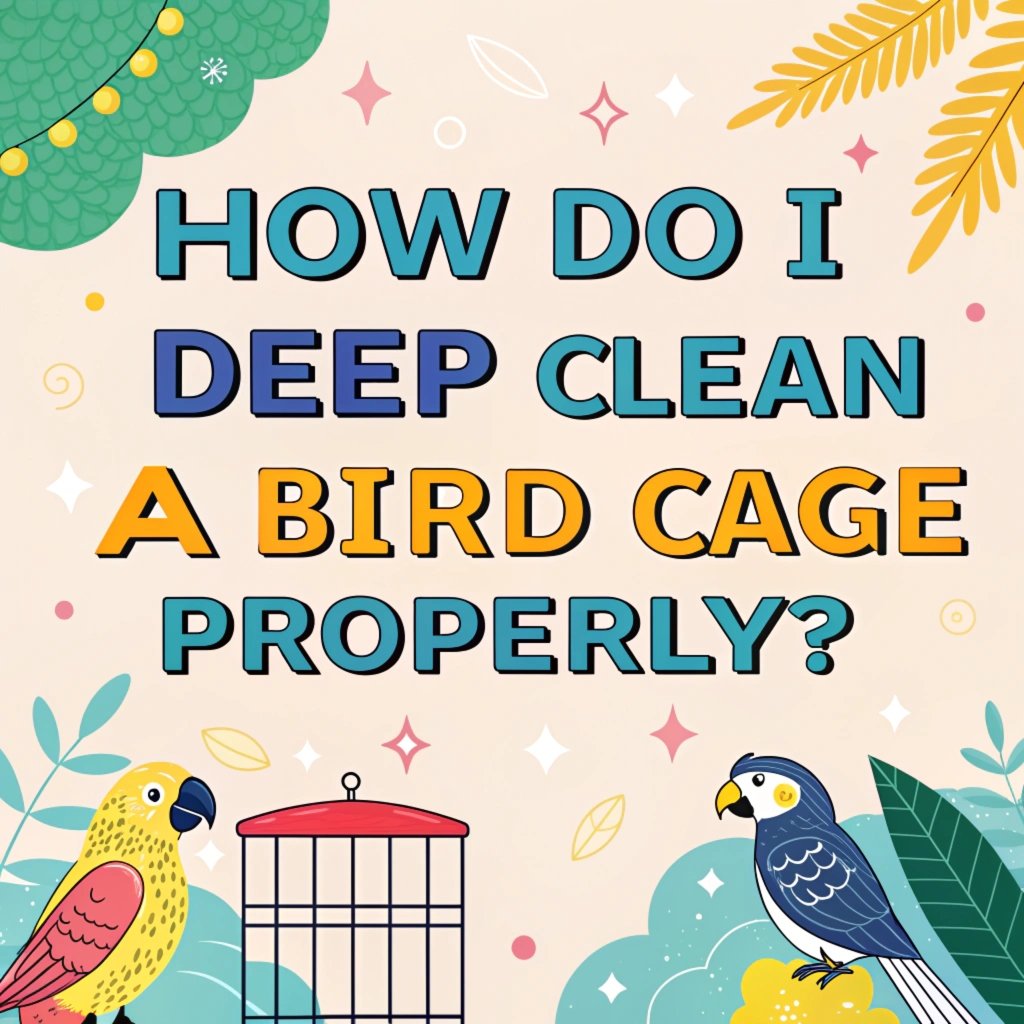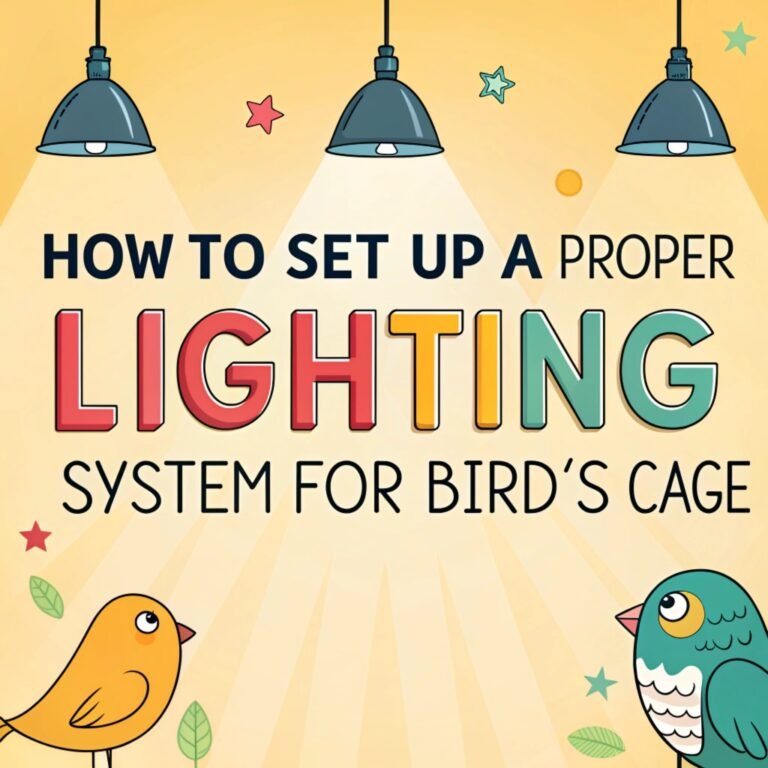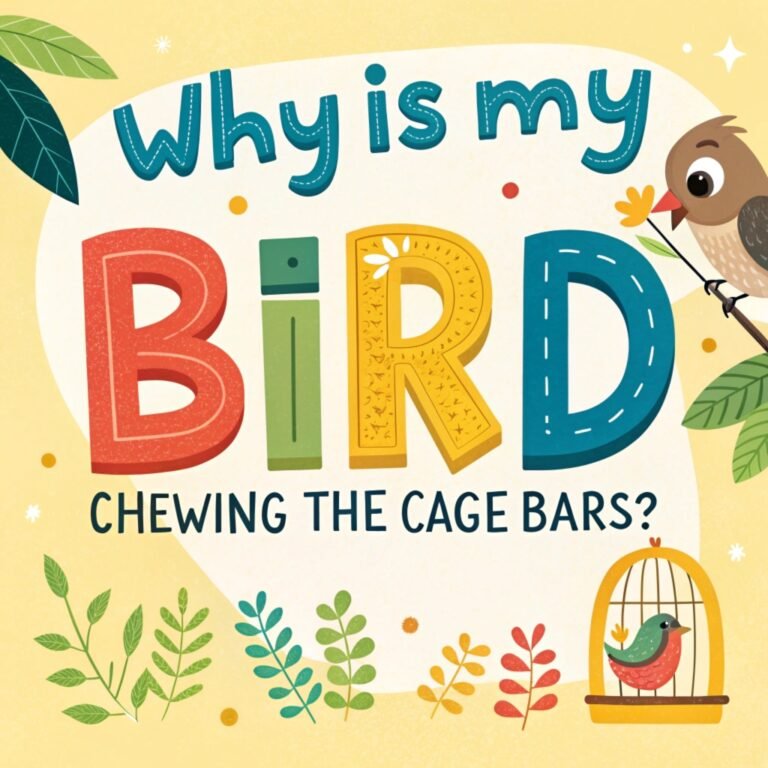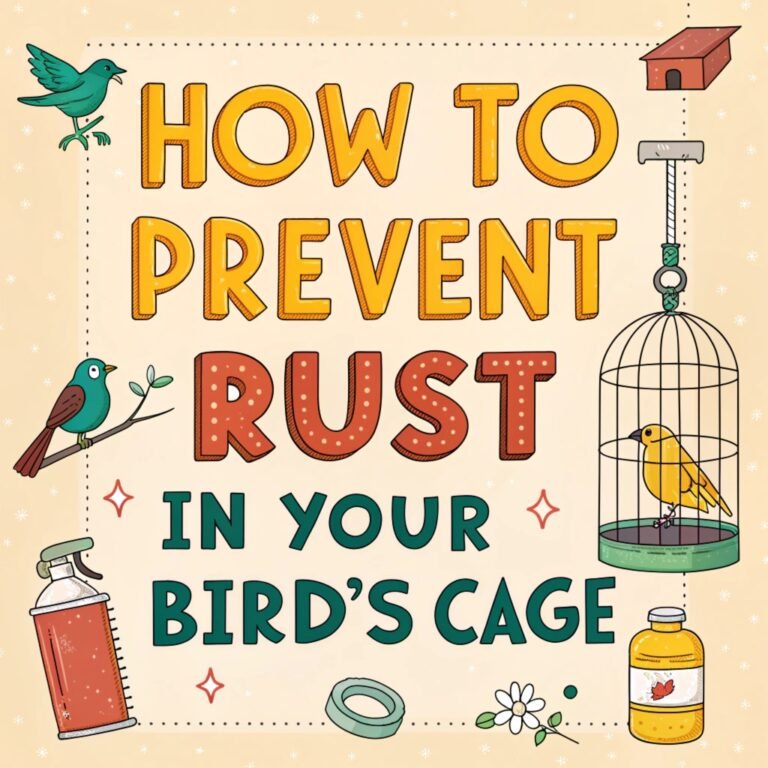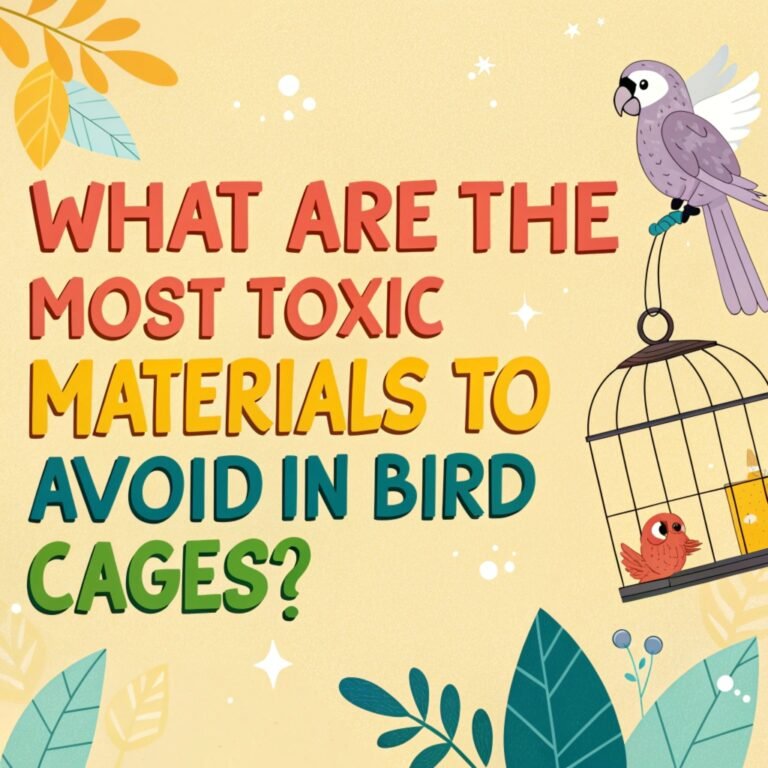How Do I Deep Clean A Bird Cage Properly? – Healthy and Happy Pet
Bird owners understand the importance of maintaining a clean living environment for their feathered friends.
A deep clean of your bird’s cage is essential for their health and well-being.
This comprehensive guide will walk you through the process of thoroughly cleaning your bird cage, ensuring a safe and hygienic home for your avian companion.
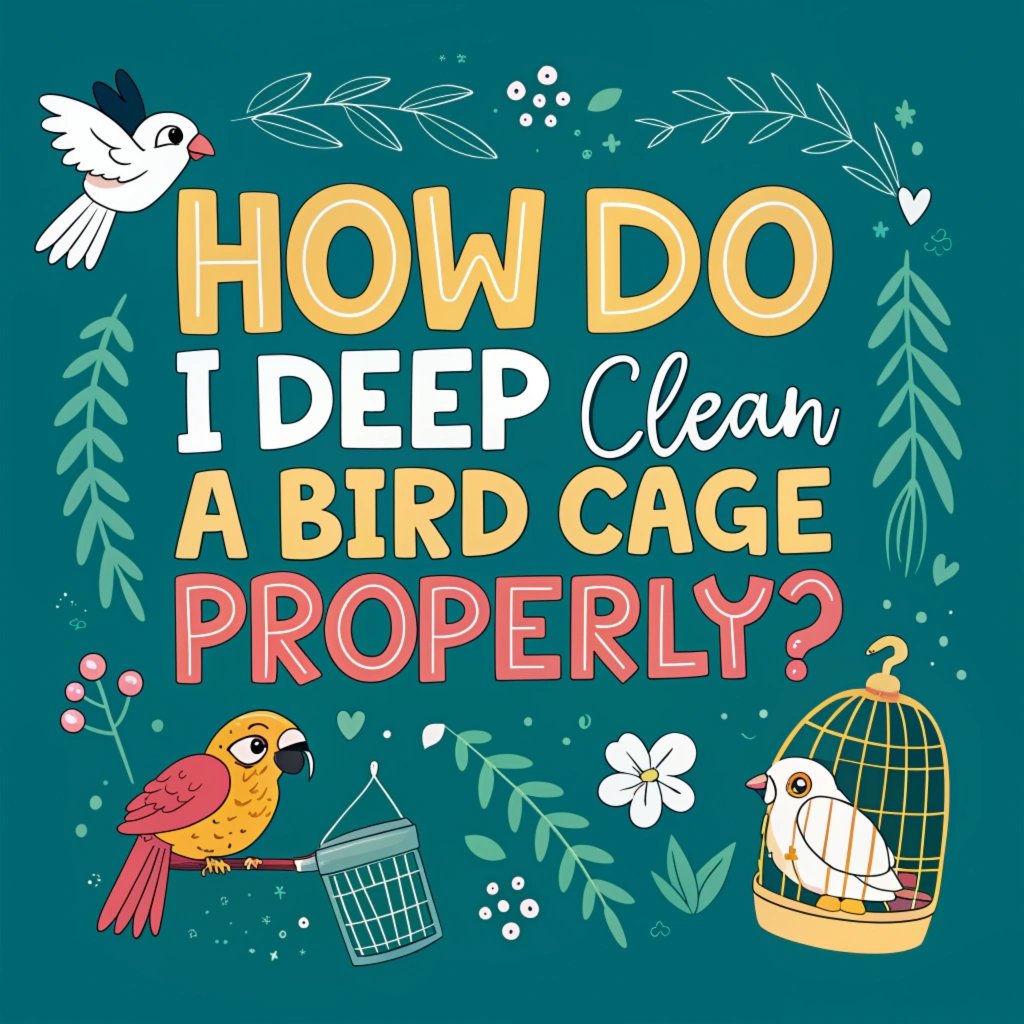
Key Takeaways
- Remove the bird and all cage contents before cleaning
- Gather necessary supplies: vinegar, hot water, bird-safe soap, scrub brushes, and clean towels
- Disassemble the cage for thorough cleaning of all components
- Soak and scrub all removable parts, including perches, toys, and food dishes
- Clean the cage body with a vinegar solution, paying attention to corners and crevices
- Rinse thoroughly and dry all parts completely before reassembling
- Replace cage liners and add fresh food and water
- Perform deep cleans monthly, with daily spot cleaning for maintenance
- Use bird-safe cleaning products to avoid harmful chemical exposure
- Rotate toys and perches during cleaning to provide environmental enrichment
- Maintain a cleaning schedule to ensure consistent cage hygiene
- Monitor your bird’s health and adjust cleaning frequency as needed
- Consider the cage material when choosing cleaning methods and products
- Invest in quality cleaning tools for more efficient and effective cleaning sessions
Preparing for the Deep Clean: Gathering Essential Supplies
Before embarking on the deep cleaning process, it’s crucial to gather all the necessary supplies.
You’ll need hot water, distilled white vinegar, a bird-safe soap, scrub brushes of various sizes, clean towels, and paper towels.
It’s also helpful to have a spray bottle for your cleaning solution and a small vacuum or dustpan for debris removal.
Ensure you have fresh cage liners ready, whether you prefer newspaper or plain brown paper. Having all these items within arm’s reach will streamline the cleaning process and make it more efficient.
Additionally, consider wearing gloves and a mask to protect yourself from dust and potential allergens. If you have a large cage, you might want to clean it outdoors or in a well-ventilated area. Remember, organization is key to a smooth cleaning experience.
Removing Your Bird and Cage Contents
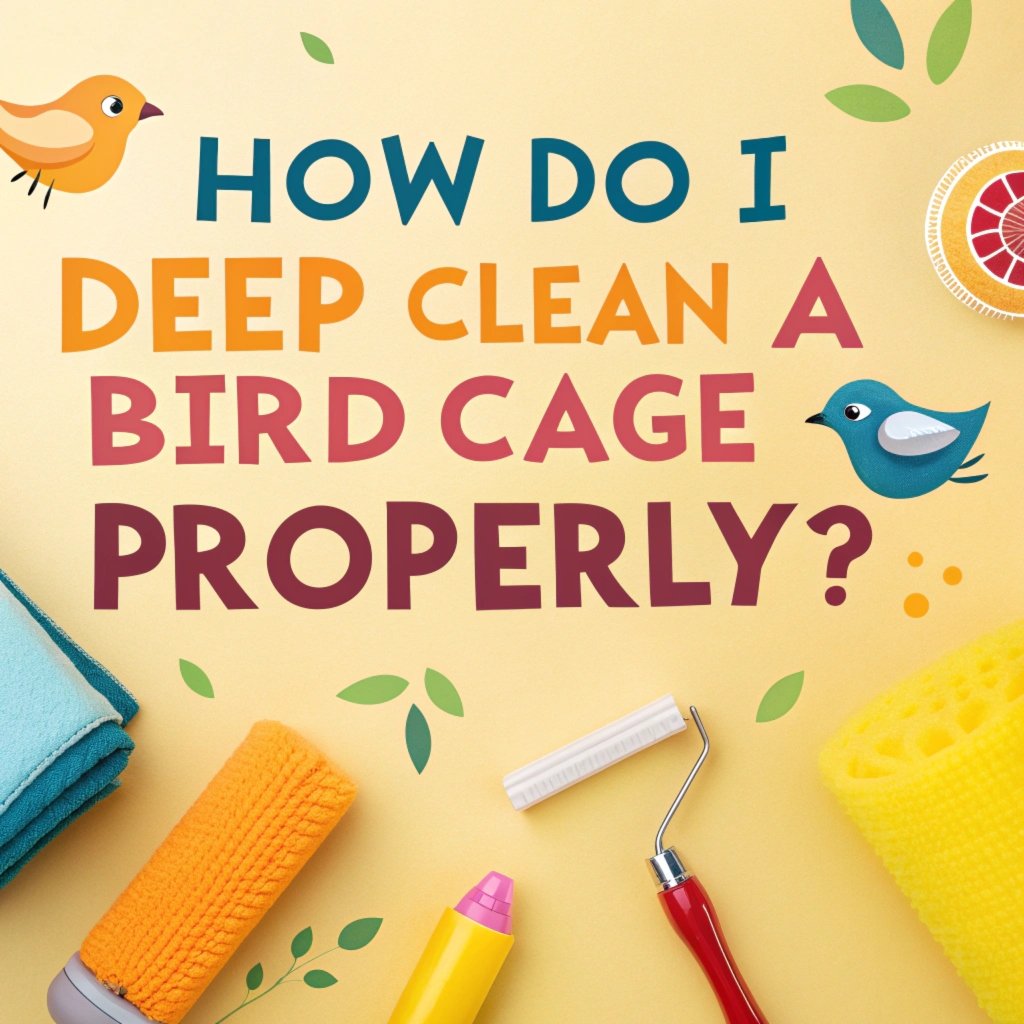
The first step in deep cleaning your bird cage is to safely remove your feathered friend. Place your bird in a secure, temporary housing area away from the cleaning zone.
This ensures their safety and prevents them from being exposed to cleaning products or stress.
Next, remove all items from the cage, including perches, toys, food and water dishes, and any cage liners or substrate. Dispose of any soiled bedding or paper.
This step allows you to access all areas of the cage for thorough cleaning and gives you the opportunity to inspect each item individually.
Disassembling the Cage for Thorough Cleaning
Many bird cages are designed with removable components to facilitate cleaning. If your cage has a detachable top, pull-out tray, or removable grates, take these apart.
This separation allows for more thorough cleaning of each part and helps you reach areas that might otherwise be difficult to access.
For cages with a base and removable top, start by cleaning the base first. This method prevents any debris from falling onto already cleaned areas.
Remember to keep track of all small parts like screws or clips to ensure proper reassembly later.
Soaking and Scrubbing Removable Parts
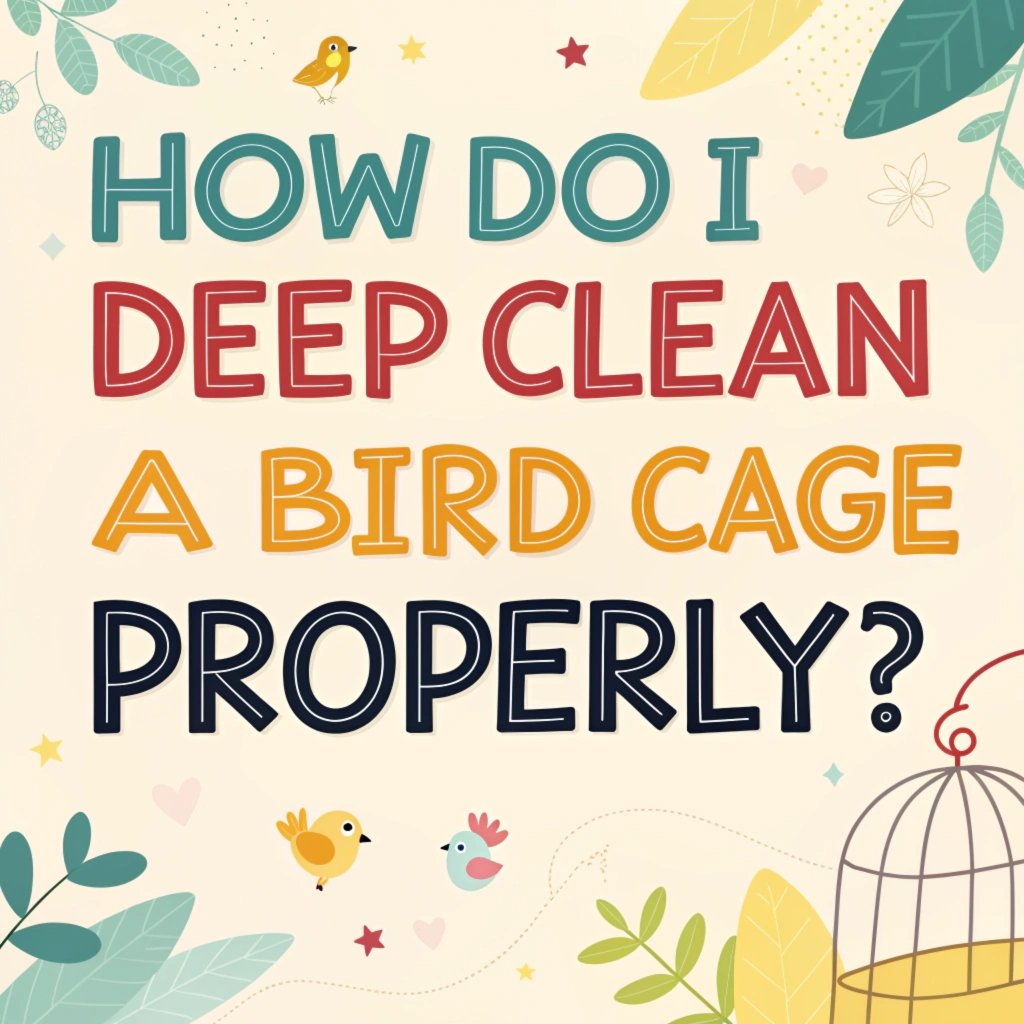
Fill a bathtub or large sink with hot water and add a small amount of bird-safe soap and vinegar. Submerge all removable cage parts, including perches, toys, and food dishes.
Allow these items to soak for several minutes to loosen any stuck-on debris.
Use a scrub brush to clean each item thoroughly, paying special attention to crevices and textured surfaces where droppings and food particles can accumulate.
For wooden perches, be careful not to oversaturate them, as excessive moisture can lead to mold growth.
Cleaning the Main Cage Structure
While the removable parts are soaking, focus on the main cage structure. Create a cleaning solution by mixing equal parts water and white vinegar in a spray bottle. This natural solution is effective and safe for birds.
Spray the entire cage with this mixture, allowing it to sit for a few minutes to help break down any stubborn dirt.
Use a scrub brush to clean the bars, paying extra attention to corners and welded areas where waste can accumulate. For particularly stubborn spots, apply some of your bird-safe soap directly and scrub vigorously.
Addressing Cracks and Crevices
Bird cages often have small spaces and tight corners that can harbor bacteria and debris. Use an old toothbrush or a small detail brush to clean these hard-to-reach areas thoroughly.
Pay special attention to areas around food and water dishes, as these tend to accumulate more grime.
For cages with textured floors or intricate designs, use the bristles of your brush to get into all the grooves.
This detailed cleaning helps prevent the buildup of harmful bacteria and ensures a truly hygienic environment for your bird.
Rinsing and Drying the Cage Components
After scrubbing all parts of the cage, it’s time for a thorough rinse. Use clean, hot water to rinse away all soap and vinegar residue.
For the main cage structure, you can use a shower head or hose if cleaning outdoors. Ensure that every surface is rinsed completely, as any leftover cleaning solution could be harmful to your bird.
Once rinsed, use clean towels to dry all cage components. Pay special attention to corners and crevices where water might collect.
For faster drying, you can use a fan or place the parts in sunlight. Ensure everything is completely dry before reassembling to prevent mold growth.
Cleaning and Replacing Cage Liners
While the cage parts are drying, it’s a good time to focus on the cage liners. If you use newspaper or brown paper, simply dispose of the old liners and prepare new ones.
For reusable liners, wash them thoroughly with hot water and a mild detergent, then dry completely.
When replacing liners, consider using multiple layers. This allows for easy daily maintenance by simply removing the top layer.
Ensure the liners fit properly in the cage tray to prevent your bird from accessing the edges and potentially ingesting the paper.
Reassembling the Cage and Adding Fresh Accessories
Once all components are clean and dry, it’s time to put the cage back together. Start by replacing the grate and tray if your cage has these features. Then, reattach any removable parts of the cage structure.
As you reassemble, take the opportunity to rearrange perches and toys. This change in environment can provide mental stimulation for your bird.
Ensure all perches are securely fastened and placed at various heights to encourage exercise and foot health.
Final Touches: Adding Food, Water, and Your Bird
With the cage reassembled and furnished, add fresh food and clean water. This is a good time to wash and refill all food and water dishes, even if they don’t appear dirty. Ensure all dishes are securely attached to prevent spills.
Finally, it’s time to reintroduce your bird to their freshly cleaned home. Watch them as they explore their refreshed environment, ensuring they seem comfortable and that all parts of the cage are functioning correctly.
Establishing a Regular Cleaning Schedule
While deep cleaning is essential, daily maintenance is crucial for your bird’s health. Develop a routine that includes daily spot cleaning, weekly perch and toy washing, and monthly deep cleans.
This consistent care prevents the buildup of harmful bacteria and makes each cleaning session more manageable.
Adjust your cleaning frequency based on your bird’s habits and the number of birds in the cage. Larger birds or multiple birds may require more frequent cleaning.
Always be attentive to your bird’s health and behavior, as changes could indicate a need for more thorough or frequent cleaning.
Choosing Bird-Safe Cleaning Products
When selecting cleaning products for your bird’s cage, prioritize safety. Avoid harsh chemicals or products with strong odors. Vinegar and mild, unscented dish soap are generally safe and effective.
Some pet stores offer specialized bird cage cleaners, but always read labels carefully and avoid products containing phenols or other toxic ingredients.
Consider making your own cleaning solution by mixing equal parts water and white vinegar. This natural disinfectant is safe for birds and effective at cutting through grime. For stubborn stains, a paste made from baking soda and water can be a safe scrubbing agent.
Tips for Cleaning Different Cage Materials
Different cage materials may require specific cleaning approaches. For metal cages, the vinegar solution works well and helps prevent rust.
Wooden cages or accessories should be cleaned carefully to avoid over-saturation, which can lead to mold growth. Use a damp cloth rather than soaking wooden items.
For plastic components, warm soapy water is usually sufficient. Avoid using abrasive materials that might scratch the surface, creating places for bacteria to hide.
If your cage has any painted surfaces, be gentle in your cleaning to prevent chipping or peeling.
Maintaining Cage Hygiene Between Deep Cleans
Between deep cleaning sessions, maintain your bird’s cage with daily spot cleaning. Remove any visible droppings, uneaten food, and shed feathers. Wipe down perches and toys with a damp cloth, and change cage liners as needed.
Regularly inspect the cage for any signs of wear or damage that could pose a safety risk to your bird.
Check perches for splinters or cracks, and ensure all toys are in good condition. This daily attention not only keeps the cage cleaner but also allows you to monitor your bird’s health through their droppings and eating habits.
FAQs
How often should I deep clean my bird’s cage?
Deep cleaning should be done at least once a month, but the frequency may vary depending on the size of your cage, the number of birds, and their habits. Some larger birds or multiple birds in one cage may require more frequent deep cleans.
Can I use bleach to clean my bird’s cage?
It’s not recommended to use bleach for cleaning bird cages. Bleach can be harmful to birds if not completely rinsed away. Stick to bird-safe alternatives like vinegar and mild, unscented dish soap.
How do I clean wooden perches and toys?
Clean wooden items with a damp cloth and mild soap. Avoid soaking them, as this can lead to mold growth. Allow wooden items to dry completely before returning them to the cage.
Is it safe to clean the bird cage with my bird in the room?
It’s best to remove your bird from the area when deep cleaning their cage. The process can be stressful for them, and cleaning products, even if bird-safe, can irritate their sensitive respiratory systems.
How can I reduce the amount of mess my bird makes in its cage?
Use appropriate cage liners, provide foraging toys to contain mess from food, and consider using a seed catcher around the cage. Regular training and interaction can also help reduce destructive or messy behaviors.

Hello, I’m Amelia White, the founder of birdsfanatic.com. As a lifelong bird enthusiast and spiritual seeker, I’ve always been fascinated by the mystical connections between birds and the human experience. On this site, I share my knowledge and insights into the symbolic meanings and spiritual significance of various bird species, exploring their roles in mythology, folklore, and cultural traditions. Join me on this journey into the world of birds, where we’ll discover the hidden wisdom and guidance that these magnificent creatures have to offer.

